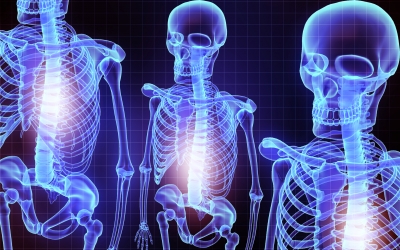Do you need an X-ray or MRI of your back?
Written by: Paul Kochoa, PT, DPT, OCS, CKTP, CGFI
Let’s talk about high-value, cost-conscious health care. I don’t want to get mired in controversy so we’ll keep it simple. Let’s narrow it down to radiological tests and back pain. The big question is: Do you need an x-ray or MRI of your back?
So you’re having back pain, it’s been bothering you for a couple months. You thought that it would go away, so you ignored it. Now it’s worse and it’s stopping you from doing things that were previously easy to do. You go see a doctor and they order x-rays. Let’s stop it right there. A recent article in the New York Times outlined how doctors are continuing to over treat back problems.
When it comes to getting x-rays or MRIs for you back pain, less is more. In a another article in the Annals of Internal Medicine, they find that radiological tests are not needed for the most part. The article entitled, Diagnostic imaging for low back pain: advice for high-value care from the American College of Physicians, states that x-rays and MRIs can cause more harm than good and overuse of such diagnostic tests are too expensive and don’t equate to better care. But according to the New York Times, doctors are ignoring this finding and have increased their use of imaging by 57%.
Imaging is not associated with better outcomes or better care. Unnecessary imaging can even expose patients to unneeded radiation. Bottom line, a good physical examination and subjective interview can reveal risk factors that indicate the need for further diagnostic tests. X-rays or MRIs should be performed only on selected, high-risk patients.
From a physical therapy standpoint, a physiotherapist can rule out certain problems and address issues without the need of an x-ray or MRI. In most cases, the findings of an MRI does not change treatment plans. Treatment stays the same whether or not you get additional tests. Furthermore, physical abnormalities like herniated or bulging discs are common, but generally unrelated to symptoms. That means that about 80% of the American population has some sort of disc or bone issue that will show up on an x-ray or MRI, but not all 80% will have symptoms or have functional deficits or limitations. You could have a small disc problem, and have major symptoms, or you could have a large disc problem and have no symptoms at all. Imaging and symptoms are poorly correlated.
So if you’re looking for high-value, cost-conscious medical treatment for back pain, try physical therapy first, before going to a medical doctor. We’re cheaper, we spend more time with you, and we can solve your problem without surgery.
If you would like more information, please call Professional Physical Therapy and Training at 973-270-7417. Our offices our located within the YMCA locations in Madison and Summit, NJ. You do not need to be a member of the YMCA to visit with us.
Image courtesy of renjith krishnan / FreeDigitalPhotos.net
